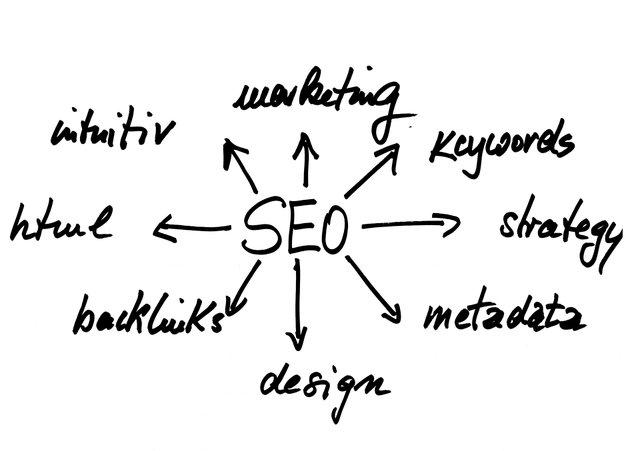Off-page SEO strategy focuses on link building and authority enhancement through competitive analysis, identifying high-quality websites for partnerships, and regular analytics adjustments. Technical SEO considerations, including site speed, mobile-friendliness, schema markup, and XML sitemaps, are crucial for search engine optimization. SEO audit results should guide content optimization, site structure improvements, and technical issue resolution to enhance rankings and attract organic traffic. Implement changes based on impact and feasibility, focusing on content quality, keyword strategy, on-page optimization, mobile optimization, page speed, security, and structured data markup.
SEO Ranking Analysis is a crucial process for any website aiming to dominate search engine results. This comprehensive guide delves into the art of understanding and optimizing your site’s visibility through an in-depth SEO Audit. From unraveling basic concepts to implementing effective strategies, we explore key components like on-page optimization, off-page link building, technical SEO, and data interpretation. Learn how to identify areas for improvement, prioritize actions, and track ranking improvements over time with our step-by-step approach to enhancing your site’s search engine friendlyness.
Understanding SEO Ranking Analysis: Unveiling the Basics

SEO Ranking Analysis is a crucial process that involves evaluating and understanding the visibility of a website or web page on search engine results pages (SERPs). It’s akin to performing an SEO audit, where professionals scrutinize various factors influencing how search engines like Google rank content. By delving into this analysis, businesses can uncover insights into their online performance and identify areas for improvement.
At its core, ranking analysis examines key metrics such as page load speed, mobile-friendliness, quality of backlinks, and the relevance of on-page content to user queries. These factors collectively contribute to a website’s search engine optimization (SEO) health. This process helps in identifying technical issues that hinder visibility and provides a roadmap for enhancing content strategies to drive higher rankings over time.
The Purpose of an SEO Audit: Identifying Areas for Improvement

A SEO audit is a comprehensive evaluation of a website’s performance in search engine optimization (SEO). It serves as a critical tool for businesses to understand their online visibility and identify areas where they can enhance their digital presence. By conducting an in-depth analysis, companies can uncover hidden opportunities to improve their search rankings, attract more organic traffic, and ultimately increase conversions.
During an SEO audit, experts examine various factors such as keyword strategy, on-page optimization, technical aspects, content quality, and backlink profile. This process helps pinpoint issues like low-quality backlinks, meta tag errors, mobile usability problems, or content that isn’t aligned with current search trends. Armed with this knowledge, businesses can make data-driven decisions to refine their SEO strategies, ensuring they stay competitive in the ever-evolving digital landscape.
Key Components of a Comprehensive SEO Audit

Analyzing On-Page Factors: Optimizing Your Website Content

Analyzing on-page factors is a crucial step in any comprehensive SEO audit. This involves scrutinizing various elements within your website’s content and structure to ensure they align with search engine optimization best practices. Key aspects include optimizing meta titles and descriptions, ensuring keyword relevance, and creating high-quality, engaging content that satisfies user intent. By examining these factors, you can identify areas where your site may be falling short in terms of visibility and ranking potential.
During this process, it’s essential to consider how well your website’s content is structured and organized. This includes header tags, internal linking, and the overall readability of your pages. Search engines favor content that is not only informative but also easily navigable. By making adjustments to these on-page factors, you can significantly improve your site’s ability to attract organic traffic and climb higher in search engine rankings.
Exploring Off-Page Strategies: Building External Links and Authority

Off-page SEO involves exploring strategies beyond your website’s control, focusing on building external links and authority to enhance your search rankings. This process begins with a comprehensive SEO audit to identify areas for improvement and potential high-value link opportunities. By analyzing competitors’ backlink profiles, you can uncover relevant, high-quality websites where your target audience spends time online.
Building strategic alliances and partnerships with these influential sites can facilitate the acquisition of backlinks, a crucial element in boosting your website’s authority. This approach not only increases visibility but also establishes your brand as a trusted source within your industry. Regularly monitoring and adjusting your off-page strategy based on analytics data ensures that your SEO efforts remain effective and aligned with search engine algorithm updates.
Technical SEO Considerations: Ensuring Your Site is Search Engine Friendly

A successful SEO ranking analysis begins with a thorough understanding of Technical SEO Considerations. These are the foundational elements that ensure your website is search engine friendly, making it easier for search algorithms to crawl, index, and rank your pages. A comprehensive SEO audit should evaluate factors like site speed, mobile-friendliness, schema markup implementation, and XML sitemap creation. Optimizing these aspects enhances user experience, reduces bounce rates, and signals to search engines that your site is valuable and trustworthy.
Focusing on technical SEO means addressing issues like broken links, duplicate content, and poor website architecture. These problems can hinder search engine visibility and negatively impact rankings. By rectifying them, you encourage search engines to crawl and index your site more effectively, leading to improved organic search performance over time.
Interpretating Audit Findings: Prioritizing Actions for Boosting Rankings

Interpreting the results of an SEO audit is a critical step in enhancing your website’s search engine rankings. By carefully analyzing the data, you can identify areas of strength and weakness that require attention. Look for opportunities to optimize content, improve site structure, enhance user experience, and address any technical issues flagged during the audit. Prioritizing these actions involves evaluating their potential impact on your target audience and overall SEO strategy.
Focus on actionable items that align with your business goals and have a high potential for improvement. For instance, optimizing meta tags and descriptions can significantly increase click-through rates, while fixing mobile usability issues is crucial for providing a positive user experience. Prioritizing these tasks ensures that you are efficiently allocating resources to boost your rankings and attract more organic traffic.
Implementing Changes: A Step-by-Step Guide to SEO Optimization

Implementing changes based on your SEO audit is crucial for enhancing online visibility and driving organic traffic. Start by identifying key areas that require optimization, such as content quality, keyword strategy, and site structure. Next, prioritize tasks according to their impact and feasibility. Update or create high-quality, keyword-rich content that addresses user intent. Ensure proper on-page optimization, including meta tags, headers, and internal linking. Simplify your site’s architecture by streamlining URLs and improving navigation, making it easier for search engines to crawl and index pages.
For technical SEO, focus on mobile optimization, page speed enhancement, and securing HTTPS. Regularly monitor and address any broken links or redirects. Implement structured data markup to help search engines understand content better. Consider re-evaluating your XML sitemap and robots.txt file to ensure efficient crawling. Lastly, track changes using analytics tools, allowing you to measure the success of optimizations and make data-driven adjustments moving forward.
Measuring Success: Tracking Ranking Improvements Over Time

Measuring success in SEO is a critical aspect of any digital marketing strategy, and it involves tracking ranking improvements over time. A comprehensive SEO audit should include a thorough analysis of keyword rankings for relevant terms. By comparing historical data with current performance, marketers can identify areas where optimization efforts have led to positive changes. This process allows for data-driven decision-making and ensures that resources are allocated efficiently.
Regular monitoring enables businesses to stay informed about their search engine visibility and make necessary adjustments to their content strategy. Over time, consistent tracking reveals trends, highlights breakthroughs, and pinpoints areas needing further attention, ensuring the website remains competitive in the dynamic digital landscape.
